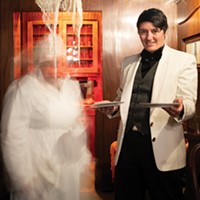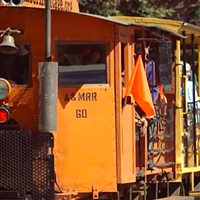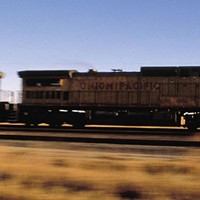[
{
"name": "Top Stories Video Pair",
"insertPoint": "7",
"component": "17087298",
"parentWrapperClass": "fdn-ads-inline-content-block",
"requiredCountToDisplay": "1"
}
]
On the issue of an East-West rail line, there are those who promote the notion of "no public funding for the feasibility study at all," or "if there is a need, let the private sector do the study." Those comments suggest that no state or federal funds should be used in a feasibility study. If this is to save taxpayers money, it must be noted that state and federally funded programs already exist. They are competitive and were designed to help local entities develop solutions to local and regional issues. The taxpayer funds will be spent either in or out of our region. By not competing for these funds, we are actually promoting other regions of the state or nation instead of our own.
It is probable that a wholly privately funded feasibility study could be completed with little or no public input. In that case, the first time the public might get to review and comment on the private work product would be after information has been collected, analysis completed and a plan developed. In addition, it is entirely probable that information generated by a privately generated study would be proprietary and thus not available for public review. I would venture to predict that the same individuals or groups who do not want to spend public monies on this study would then complain loudly about the lack of transparency and accountability of a private study that might lead to an actual project.
Public funding for all or part of the feasibility study is desirable to ensure public transparency and accountability. From the beginning of public discussion about funding an East-West rail feasibility study, there has been a very clear message: "There would be no expenditure of local general fund money spent on the study." That message is at the heart of the memorandum of agreement that formed the UpState RailConnect Committee. The committee consists of the city of Eureka, the counties of Humboldt, Trinity and Tehama, and others dedicated to the feasibility study process. A minor amount of staff time by all member agencies was used to establish the UpState RailConnect Committee, which first met in November 2012.
By design, the committee has used volunteers, a nonprofit organization and a small state grant to coordinate regionwide support, provide public education presentations, assist in the public process and research public funding. A partially or wholly publicly funded study using guidelines being developed by the UpState RailConnect Committee will guarantee public involvement throughout, from crafting the scope of work to reviewing data and draft and final reports. As proof of the sincerity of this public process, the UpState RailConnect Committee has proposed approximately 23 public meetings during the feasibility study process.
Elected officials create and shape public policy during their service on policy-making bodies. To form good policy, every elected official should seek out and use factually based information. With a publicly funded study, elected officials and the public are guaranteed access to study information. The UpState RailConnect Committee was formed specifically to ensure that the feasibility study process was as open as possible and that it was funded with the minimal financial impact to these local agencies. Thus far, it has been successful on both counts.
"Do not spend public monies" is not a new argument. The feasibility studies and designs of many fully or partly publicly funded projects have been subject to the same objections. They range from the redevelopment of Old Town and downtown Eureka to the Wharfinger Building and the public marina. All have benefited Eureka, creating and sustaining longterm jobs and innovative local businesses.
The economic viability of the proposed rail lies in its use as a "land bridge" between the port and the national rail network. This creates jobs for existing residents and is limited in scope with regard to new corporate development. The population of the region would likely remain steady while the unemployment rate would drop through high-paying, benefitted jobs. Local agencies and local communities would benefit from taxation and fees associated with increased port usage, and local business through lower transportation costs. Our existing population and resource markets do not merit local import/export port utilization. This has resulted in the neglected condition and underutilization of our port. Creating a land bridge would bring money into the community for projects that will enhance our way of life and our environment, through both increased incomes and environmental quality.
In 1990 when addressing the East-West rail concept, Journal publisher Judy Hodgson wrote "A century later, it may be an idea whose time has come." With a partially or a wholly publicly funded feasibility study, Judy may be right.
Lance Madsen, a Eureka city councilman, is chairman of the UpState RailConnect Committee and the contact agent listed with the California Secretary of State for the Land Bridge Alliance, which supports a feasibility study for an East-West rail line.
Speaking of Trains
-

Ghosts on the Tracks
Oct 19, 2023 -

All Aboard: Vintage Train Video
Oct 14, 2017 -

Train Coming?
Apr 24, 2014 - More »
Comments (6)
Showing 1-6 of 6
Latest in Views
Readers also liked…
-
Hope
- Sep 7, 2023
-
California Says No to Privatizing Medicare
- Sep 21, 2023































